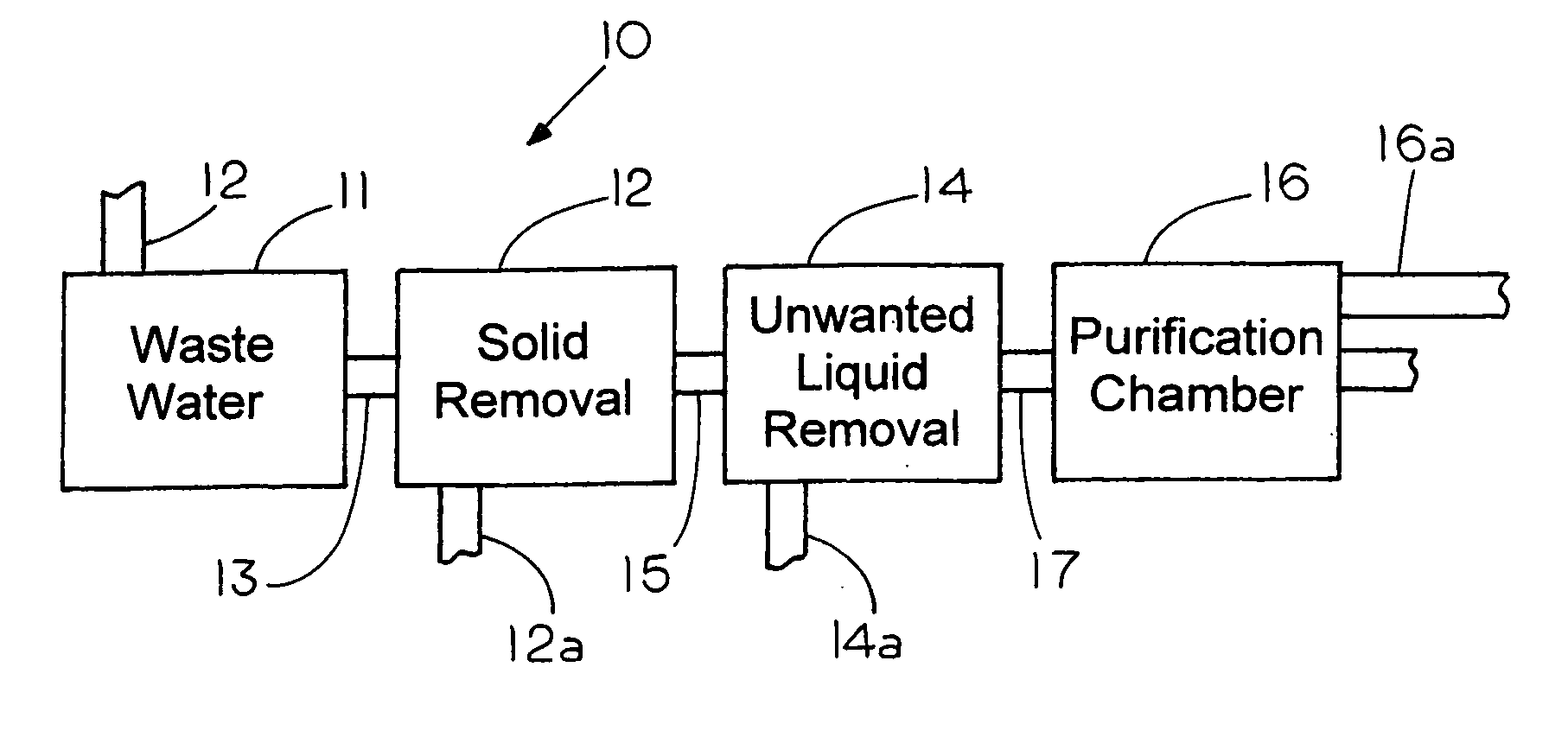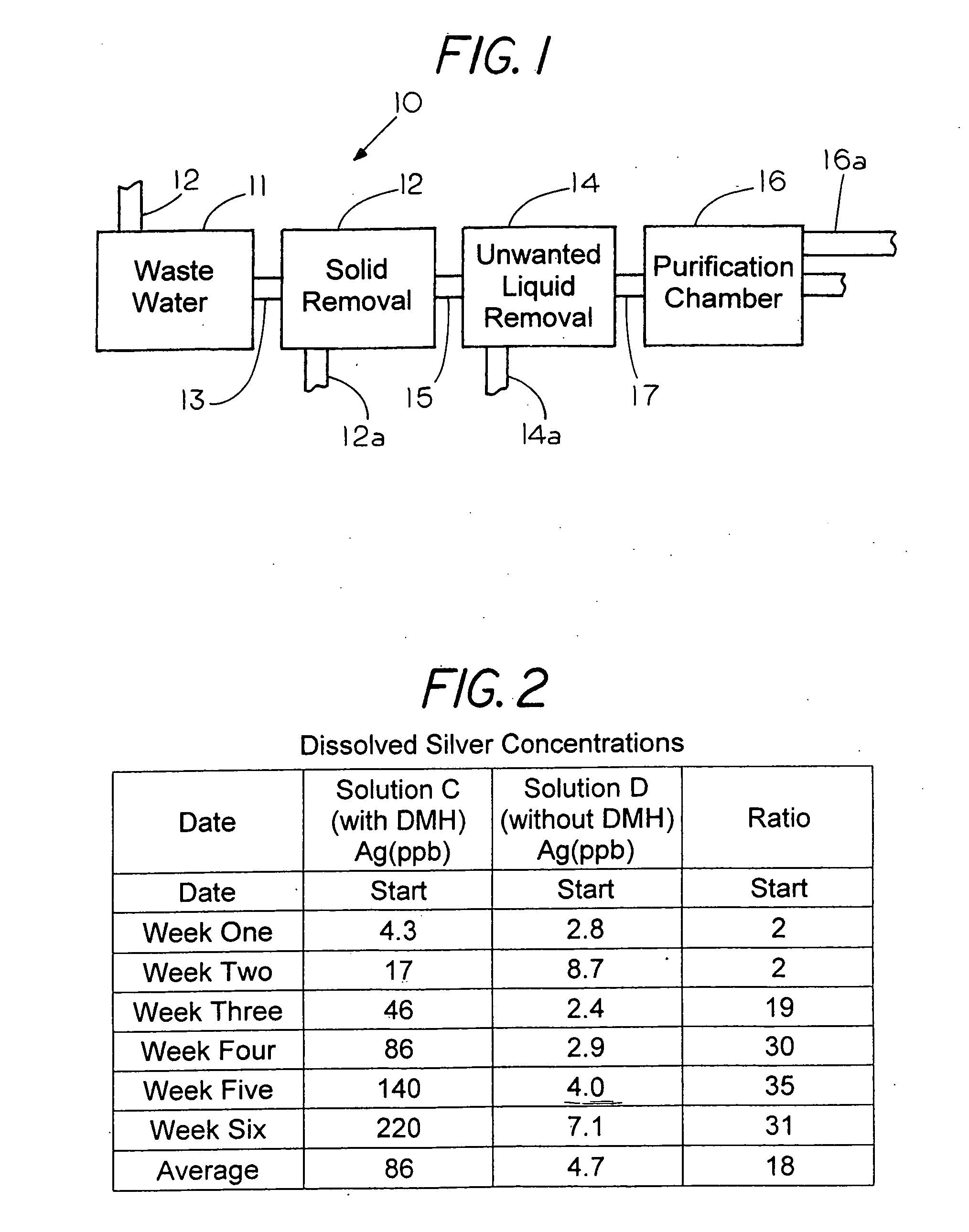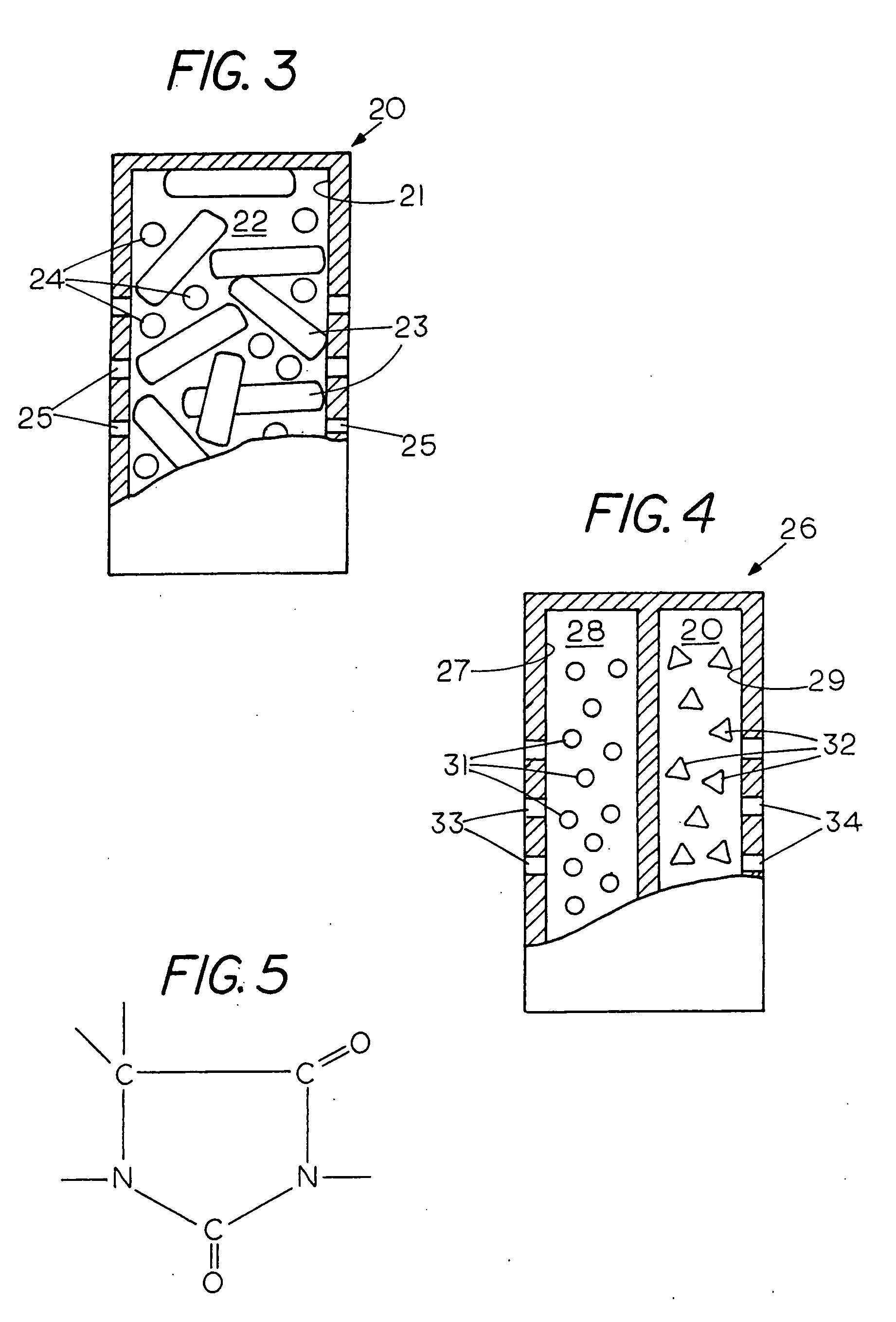Wastewater treatment
- Summary
- Abstract
- Description
- Claims
- Application Information
AI Technical Summary
Benefits of technology
Problems solved by technology
Method used
Image
Examples
example
[0025]Silver bromide was initially prepared from a saturated sodium bromide solution, combined with silver nitrate in solution. The yellow precipitate, silver bromide, was than purified by filtration and washing. Additionally, the solid was allowed to dry before use.
[0026]A buffer system having a pH of 7.41 was prepared by adding Fisherbrand® potassium phosphate monobasic-sodium phosphate dibasic buffer to 2 Erlenmeyer flasks filled with 1000 mL of purified water. The first flask was treated with 1.12 grams of 5,5-dimethylhydantoin (DMH) and marked solution “C” (with DMH) and the second flask was left untreated and marked solution “D” (without DMH) for control. In regards to the 5,5-dimethylhydantoin (DMH), the 5,5-dimethylhydantoin (DMH) comprised 97% reagent grade was obtained from Aldrich® (CAS No. 77-71-4, Cat. No. D161403-1KG).
[0027]After the initial set-up, approximately 0.10 grams of dried silver bromide was introduced into a dialysis tubing (Fisherbrand®, 45 mm, MWCO 12,000-...
PUM
| Property | Measurement | Unit |
|---|---|---|
| Fraction | aaaaa | aaaaa |
| Fraction | aaaaa | aaaaa |
| Fraction | aaaaa | aaaaa |
Abstract
Description
Claims
Application Information
 Login to View More
Login to View More - R&D
- Intellectual Property
- Life Sciences
- Materials
- Tech Scout
- Unparalleled Data Quality
- Higher Quality Content
- 60% Fewer Hallucinations
Browse by: Latest US Patents, China's latest patents, Technical Efficacy Thesaurus, Application Domain, Technology Topic, Popular Technical Reports.
© 2025 PatSnap. All rights reserved.Legal|Privacy policy|Modern Slavery Act Transparency Statement|Sitemap|About US| Contact US: help@patsnap.com



